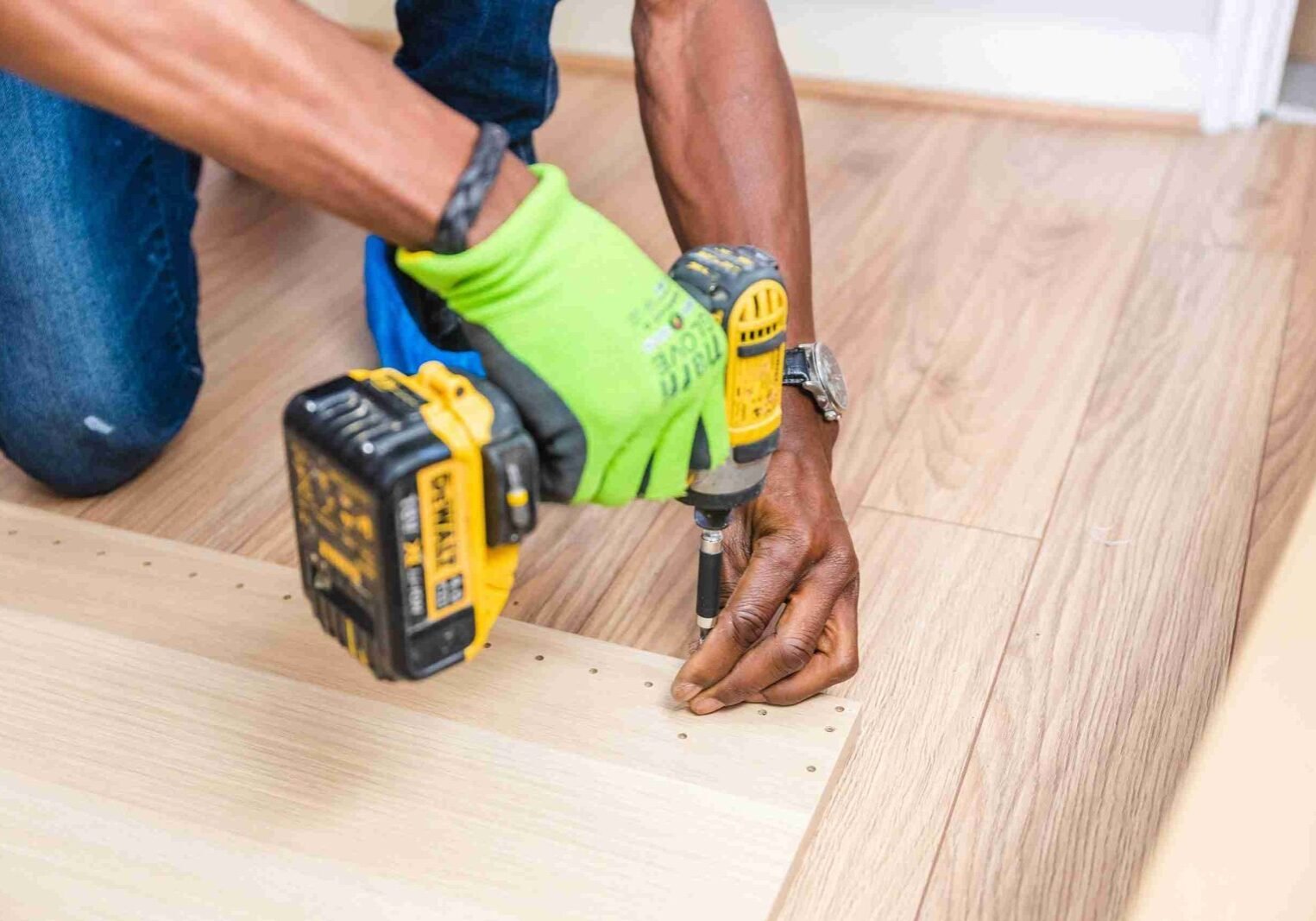Repairing the holes in your home’s walls should be a relatively simple task.
When done correctly, fixing large and small holes can recover the overall look of your home and increase the value of your home. This is a service paintEZ provides as part of preparing your walls for painting, but we also offer drywall repair as a stand-alone. For much less than than the cost of painting a single wall, we came come to your home, patch the holes in your walls, match the color, and repaint the area to make your walls look as good as new. Of course, sometimes a hole in the wall is just a hole in the wall and you don’t need us to come fix it for you, so here are some basic DIY wall repair instructions to help you out.
Nail holes
Use your putty knife to scrape off any loose pieces of drywall around the nail hole. Then, with a small amount of joint compound on your putty knife, spread the compound over the hole, making sure to push some inside. Smooth the compound in multiple directions with your knife to get an even coating and prevent air bubbles from forming that could damage the job. Let it dry for however long the compound’s manufacturer recommended, lightly sand it down, and then clean up with a microfiber cloth. Once the process is completed, you can paint over it to complete the job.
What you need: 2-inch putty knife, joint compound, 120-grit sandpaper, microfiber cloth.
Small holes
A small hole would be smaller than a doorknob and not requiring any type of reinforcement. It could be left over from a wall anchor, low voltage controls, etc. To fix this, first cap any wires that might be left exposed before tucking them into the wall space. Then, cut a piece of self-adhesive mesh patch about 2-inches larger than the damaged area and place it over the hole.
Spread joint compound over the mesh, working in multiple directions to get the best coverage. Once it has dried, lightly sand the patch and wipe away the dust with a microfiber cloth. Repeat this process to apply a second coat and paint over it with the same color of paint or repaint the entire wall to complete the look
What you need: 6-inch putty knife, joint compound, self-adhesive mesh patch, 120-grit sandpaper, microfiber cloth
| NOTE: Self-adhesive patches are available in a variety of sizes. But just because they are available in 8-inch squares does not mean you should use them for 8-inch holes. A mesh patch provides a cosmetic repair only. It should not be used to repair holes caused by doorknobs or to set wall anchors. Instead, use a doorknob plate for doors and relocate your load-bearing anchors to a wall stud. |
Large holes
Large holes are difficult to patch and can be a source of frustration if you have to repair them more than once. Before investing your time and money into repairing this type of damage, you should resolve whatever issue caused the hole in the first place. Having done that, here are the steps to one of the easiest and most cost-effective ways to repair a large hole in the wall, called a California Patch.
- Prepare the area to be patched by cutting a square section from the wall, around the damaged area. Using a straight edge, draw a square around the hole. Having done this, cut one side with your utility knife from top to bottom. Repeat this process on the other side before connecting the two sides across the bottom. Now, make a shallow cut across the top and press in on the bottom of the square to break the top free. This will allow you to cut away the remaining paper and not lose the portion being cut away in the wall.
- Depending on the size of the hole, you may need to reinforce the back of the patch in some way. Read more to learn about reinforcing large holes, or skip to step 3 if this is not an issue.
- Most often, a single piece of wood--such as a pine stake--can be used to reinforce your patch. After placing the wood inside the hole, hold it in place against the inside of the wall while you attach it with sheetrock screws from the outside. From within 1-inch of the hole’s edge, screw through the wall and into the wood backing. Set the screws slightly deeper than the surface of the wall.
- Trim the excess paper and loose material that may still be attached to the outer portion of the wall, sand the area to about 3-inches out from the edges, and measure the finished square hole.
- Add 2-inches to the dimension from a scrap piece of sheetrock and draw a square matching the size of the hole cut from the wall, centered on the patch’s back. Then, with your utility knife, make a one-quarter inch deep cut into the paper backing inside the lines drawn for the smaller hole. Carefully remove the sheetrock from the outside surface paper. You will want the finished piece to be slightly smaller than the square you removed from the wall with the paper forming one-inch paper wings around the front edges.
- With your 6-inch putty knife, liberally apply joint compound to the sanded area around the wall, making sure to get some on all sides of the edge. Then, set the patch in the hole and press the winged paper onto the joint compound, making sure to remove any air bubbles. On larger patches, you will also want to screw the patch to the wood backing before applying more compound.
- Use a 24-inch taping knife to float the area around the patch. Start by adding the compound to the center of the patch and pulling outward and applying less pressure until you reach the edge of your sanded area. Continue doing this from all directions until the patched area appears level. Once it has dried, lightly sand the patch and wipe away the dust with a microfiber cloth. Repeat this process to apply a second coat and paint over it with the same color of paint or repaint the entire wall to complete the look.
What you need: pencil, utility knife, wooden stakes, sheetrock, sheetrock screws, 6-inch putty knife, joint compound, 6-inch putty knife, 24-inch taping knife, 120-grit sandpaper, microfiber cloth
| NOTE: Sheetrock® Brand Patch & Repair Panels in 23-inch squares and pine grade stakes are available at most hardware stores. If you are reinforcing your patch as described in Step 2, be sure to select sheetrock matching the thickness of your walls. |
PaintEZ is the go-to company for all your home and office painting needs. We are committed to excellence in every project we take on. Give us a call today and we’ll show you why we’re the right choice for you.



